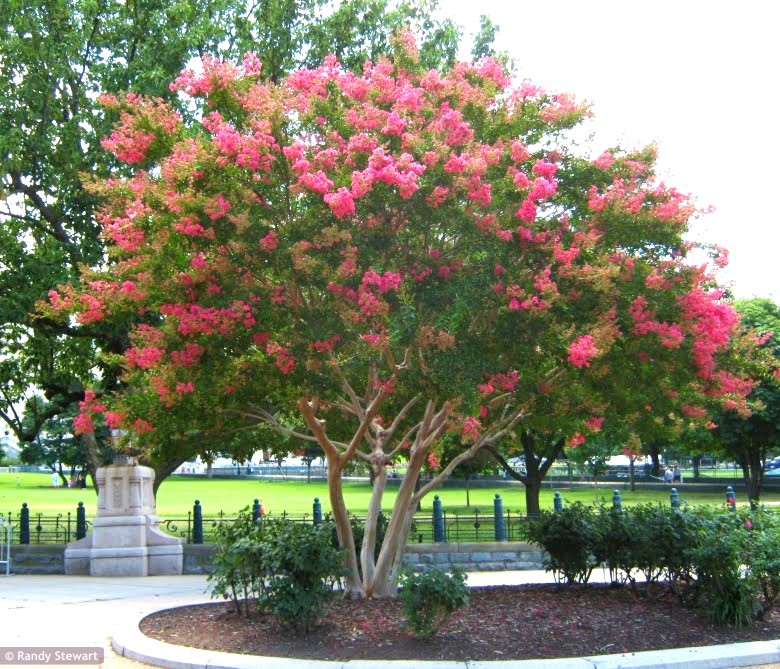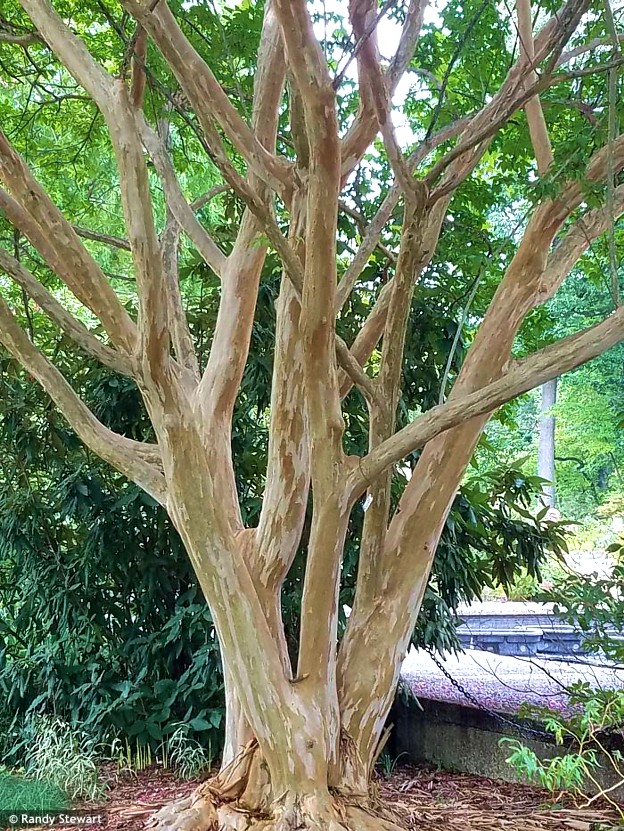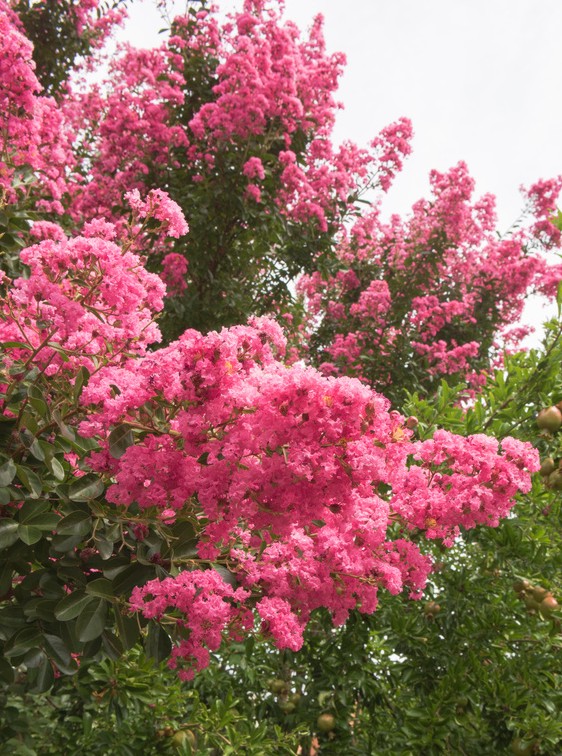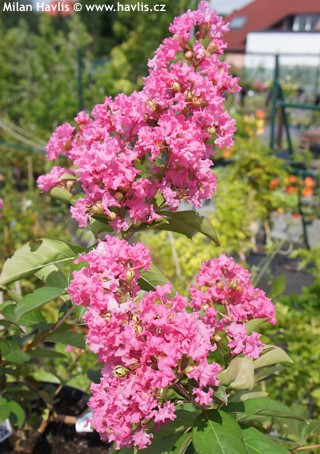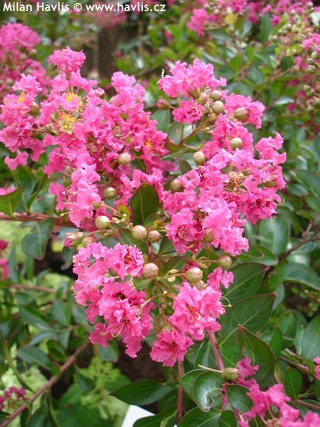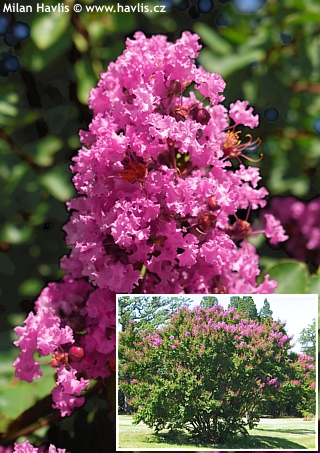Lagerstroemia 'TUSKEGEE' crepe myrtle
size/type
taller shrub,taller shrub
usual height
2-3,5m
usual width
2-3m
leaves
deciduous broadleaf
colour of leaves
flowers
showy
colour of flowers
blooming time
August-September
location
full sun
soil type
acidic (peaty)
soil moisture requirements
evenly moist (dislikes drought)
USDA zone (lowest)
7 (down to -23°C)
winter protection
for zone 5+6

for zone 7

categorized
Lagerstroemia
Crepe myrtle is a flowering shrub or small tree from China. It was first introduced to the USA and the UK in the 18th century. The original plant lagerstroemia indica is too tender and not too pretty so breeders were working on further hybridization and the most attractive varieties available now are believed to be results of crossing with l.speciosa and l.fauriei. Far more important news for us is the fact that among those finished plants were selected others that survived lower temperatures than what was common in the areas of natural habitat so we have a few myrtles that can grow even in our climate. Some were selections, other further hybrids.Description of the plant:
Tuskegee is among the first crepe myrtle hybrids ever crossed in the effort to gain a hardier variety. It makes large panicles 15-20 cm long of rich pin-red, crepe flowers with yellow anthers from August until September. Deciduous leaves are elliptic to obovate, very glossy, they emerge with burgundy red hues, mature to rich green, and turn predominantly red in autumn. Leaves are resistant to powdery mildew.Tuskegee grows fast into an open canopy with horizontal branches with age.
Pruning is important in colder zones and will bring more flowers. If you require a shrub bushy from the ground cut back last year's growth to about a third of its original size every year. Do so in spring after danger of major frosts. Since crepe myrtles can make a fantastic pattern after its old bark has peeled off, many gardeners train it into a small multistemmed tree. Select 2-4 strongest branches and remove all laterals from them, leaving the tops unpruned. Only when the plant reaches the height when your desired crown should start, which may take several years, prune lightly, and cut a little more each year until you develop a dense canopy.
Crepe myrtles need little care. They need full sun with zero shade during the day. Grow them in well-drained soil that should be kept moist before it gets fully established. If cultivated in acid soil the plant will make fabulous colour play of autumn foliage. Crape myrtle needs heavy mulching in winter and some mulch in summer to retain moisture. Fertilize in spring to encourage growth (nitrogen-based fertilizers), and in summer to encourage flowering (phosphorus-based fertilizers). It is top hardy to about -23°C and root hardy to about -25°C (USDA zone 6).
Last update: 25-01-2019
QUICK PRICE OVERVIEW
CURRENTLY SOLD OUT
WANT TO TRY A SIMILAR PLANT?













